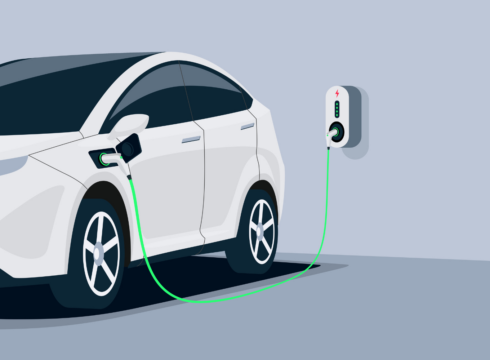SUMMARY
India is now the world's fifth-largest vehicle market, with the potential to surpass the top three soon. By 2030, it is projected there will be nearly 40 Cr customers in need of mobility solutions
In India, government officials and industry participants are pushing for faster adoption of electric vehicles. One source of concern, however, is safety
A rash of high-profile EV accidents has resulted in cars catching fire, causing concern among new car buyers
Inc42 Daily Brief
Stay Ahead With Daily News & Analysis on India’s Tech & Startup Economy
India is now the world’s fifth-largest vehicle market, with the potential to surpass the top three soon. By 2030, it is projected there will be nearly 40 Cr customers in need of mobility solutions.
Keeping in mind the Paris agreement’s goal, an increase in automobile customers should not imply an increase in conventional fuel consumption. The Indian government is constantly pushing for the introduction of electric vehicles, which would not only reduce India’s long-term oil import bills but also ensure a cleaner environment.
In India, government officials and industry participants are pushing for faster adoption of electric vehicles. One source of concern, however, is safety.
A rash of high-profile EV accidents has resulted in cars catching fire, causing concern among new car buyers.
One might believe that fire is evidently in an internal burning car, particularly one powered by a flammable substance such as gasoline. Despite the fact that an EV is just as likely as a car to catch fire after a collision. With such a high-voltage electrical system, EVs require special safeguards to ensure that the occupants and emergency personnel are not put at risk in the event of an accident.
These EVs typically catch fire due to a short circuit in one or more of the battery’s cells, which generates heat in lithium-ion batteries. The heat then causes the chemicals within the battery and adjacent cell to erupt, causing the fire to rapidly develop and spread. India’s diverse climatic conditions make it even more dangerous.
Incidents such as punctures to battery casings pose a real risk in the modern era. Some industry experts believe that, unlike in an internal combustion engine, the fire can be easily controlled once the fuel is consumed. However, in lithium-ion battery-powered electric vehicles, even after the fire has been extinguished, the batteries retain energy and can easily be used to reignite the fire.
The Indian-certified agencies ARAI (Automotive Research Association of India) and ICAT (International Centre for Automotive Technology) are developing the ability to test batteries and electric vehicles. Some industry experts and professionals believe that EVs are just as safe as internal combustion-engined vehicles (ICEVs). Electric vehicles have fewer frictional parts than internal combustion engines for a variety of reasons, resulting in fewer wear and tear complications.
Maintenance And Safety Of Electric Vehicles
Hybrid electric vehicles (HEVs) and plug-in hybrid electric vehicles (PHEVs) have similar safety requirements as traditional vehicles, while all-electric vehicles require less maintenance. Manufacturers are designing these vehicles and publishing maintenance manuals with safety and upkeep in mind.
Battery Maintenance
These vehicles’ advanced batteries have a limited number of charging cycles (the number of times the battery can be charged and discharged, also known as “cycle life”). After checking with the dealer about battery life and warranties, consider the manufacturer’s battery recycling policy. Some automotive battery systems use liquid coolant to maintain safe operating temperatures. These systems might require regular checks.
Manufacturers rarely publish pricing for replacement batteries, but if the battery needs to be replaced after the warranty period has expired, it is likely to be prohibitively expensive. However, as technology improves and production volumes increase, battery prices are expected to fall.
Safety Requirements
Commercially available electric-drive vehicles must always meet the Federal Motor Vehicle Safety Standards and must pass the same stringent safety testing as conventional vehicles sold in the United States. Neighborhood EVs, on the other hand, are subject to less stringent standards because they are typically restricted to low-speed roadways as specified by state and local regulations.
High-voltage electrical systems range from 100 to 600 volts in all — EVs, PHEVs, and HEVs. Their battery packs are housed in sealed shells and have passed testing for conditions such as vibration, overcharge, short circuit, extreme temperatures, humidity, fire, collision, and water immersion.
These vehicles are typically designed with insulated high-voltage lines and safety features that deactivate the electrical system when a clash or short circuit is detected. All EVs prefer a lower centre of gravity than traditional vehicles, which makes them stronger and less likely to roll over.
Emergency Response And Training
The emergency response time for electric vehicles is comparable to that of conventional vehicles. Electric vehicles have cut-off switches to separate the battery and disable the electric system, and high-voltage power lines are clearly marked with orange colouring. Manufacturers publish emergency response guides for their vehicles and provide emergency responder training.
Note: We at Inc42 take our ethics very seriously. More information about it can be found here.


